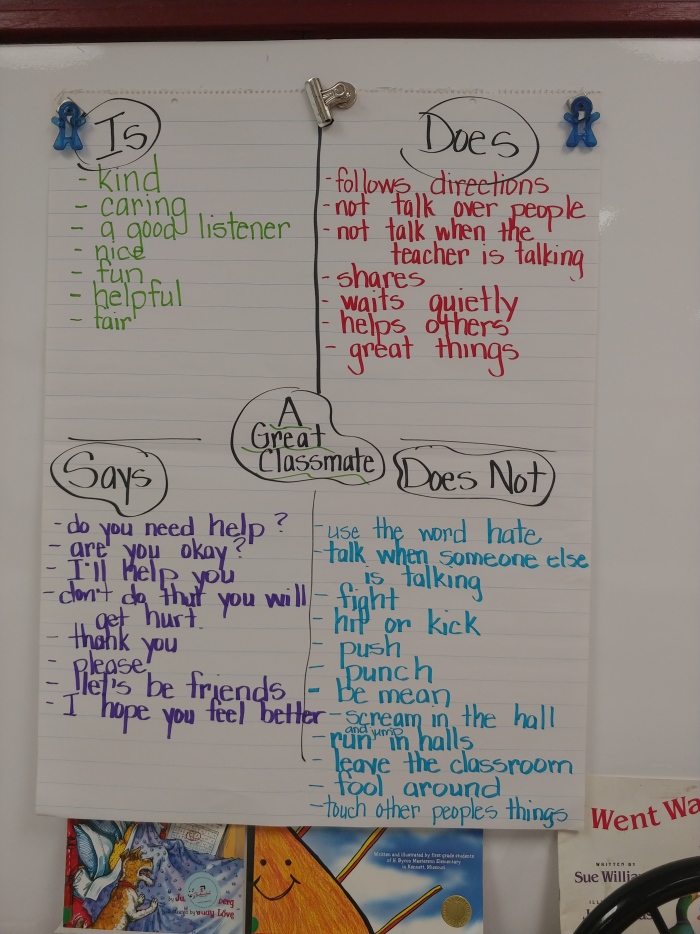The teacher works with others to create environments that support individual and collaborative learning, and that encourage positive social interaction, active engagement in learning, and self-motivation.
For learners to grow and develop, teachers must create learning environments in which children want to learn. Students do not want to learn if they do not like the environment in which they are learning. Students learn best if they are in an environment in which they are active in their own learning and an environment that is positive. Furthermore, a teacher must promote an environment that respects all students’ learning preferences; therefore, the teacher must take note of those learning preferences. Students are more excited to come to school if they are in an environment that promotes positive social interaction and active participation in learning. For students to learn, they must make the child want to come to school. It is up to the teacher to create the environments that make students want to come to school. The environment that a teacher creates in the classroom is called the classroom climate. The teacher must create a positive classroom climate; in other words, the teacher must use positive language towards the students and show enthusiasm for what the students will be learning. If the teacher is positive and excited for learning, the students will feel enthusiastic and have a positive attitude towards learning.
Fall Science Lesson Letter to Parents
It is not only the child that needs to be excited and enthusiastic about his or her learning, but parents must be excited for learning as well. Teachers can also communicate and collaborate with parents about the fun, interactive lessons they have planned for parents’ children. My first artifact is a letter I sent home to the parents of my students about a science project I had planned about Fall. In the letter, I wrote to the parents asking them to send their children to school with magazines for the project. The project was a collage in which students had to cut pictures out of magazines that reminded them of fall, whether it was the image or the colors. I designed the letter with a border that reminded me of leaves. When I originally wrote the letter, I tried to get the parents excited by saying, “It is an art project your child will bring home that he or she will be really excited to show you”. I thought that might appeal to the parents because it makes it sound as if the child will be excited about what he or she is learning in school. However, my cooperating teacher suggested that I change it to, “share with you” because it makes the parents feel like they are part of the child’s learning experience. I agreed with her, so I changed what the letter said. I chose this artifact because it creates a learning environment in which not only are the students actively involved with their education, but the parents are actively involved as well. Parents want to feel involved with their child’s education, and children are eager to share with parents the exciting day they had at school. Therefore, it is important that teachers communicate enthusiasm in the letters they send home to parents. In my letter, I am asking the parents to send their children to school with magazines by telling them that their child will have fun with this fall lesson, and they will like to see it. That communicates enthusiasm and positivity to parents as well as having parents participate in the collaborative learning process with me as well as their child. In other words, it shows parents that I am excited about this lesson and their child will be excited to share it with them. Therefore, the parents should be excited about the lesson that is taking place in my room as well. Not only do I show enthusiasm and positivity about the project, but the theme of the project as well. I start the letter with, “Fall is among us”, which communicates that I am celebrating the arrival of Fall. This makes them feel that the child will feel my enthusiasm about fall as well. This artifact demonstrates my understanding of the third standard because it shows that I am positive and enthusiastic about what I plan for my class to do; therefore, I create a positive learning environment. It also shows that I am willing to have my students and their parents involved in the child’s learning journey. I even design the border of the letter to show that I am enthusiastic about Fall. I am creating a positive feeling about the content and project, so the child will feel that enthusiasm and so will their parents.

To develop a positive learning environment for students, the teacher must create classroom rules and expectations to help student feel comfortable in their learning environment. For the teacher to know what makes a comfortable classroom environment for each student, it is good for students to be part of the discussion in making those classroom rules. My second artifact is a poster of what is expected of all great classmates in my cooperating teacher’s classroom. The poster is divided into four sections: what a great classmate is, does, says, and does not. My cooperating teacher uses this to help brainstorm her classroom rules for her students that will create a safe and positive learning environment. Before we actually created our classroom rules, we would refer to this poster when stating our expectations for the classroom to create a warm and welcoming environment. I chose this artifact because it shows the importance for teachers to state what is expected in the classroom. It shows what is expected of students to be a great classmate and create a comforting environment. When students know what is expected to create a warm environment, they will help to create the environment the teacher expects. This artifact connects with this standard because it shows how I plan to collaborate with my students to create classroom rules and expectations with them in mind to create the best learning environment possible. This artifact makes me a better teaching candidate because it shows that my students will know what is expected in my class not only because I clearly state my expectations, but I include my students in the discussion on what is expected to create the best learning environment possible.
